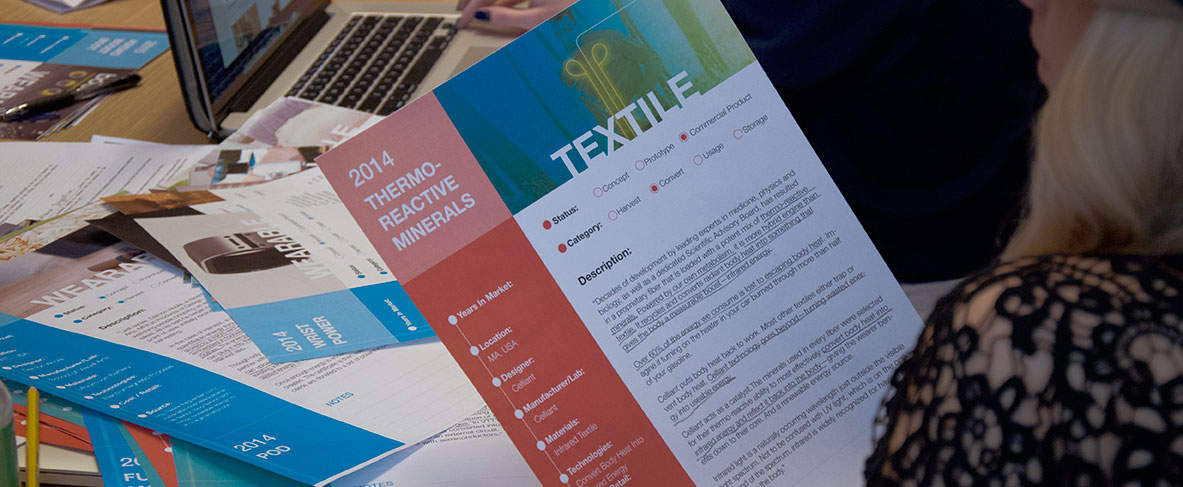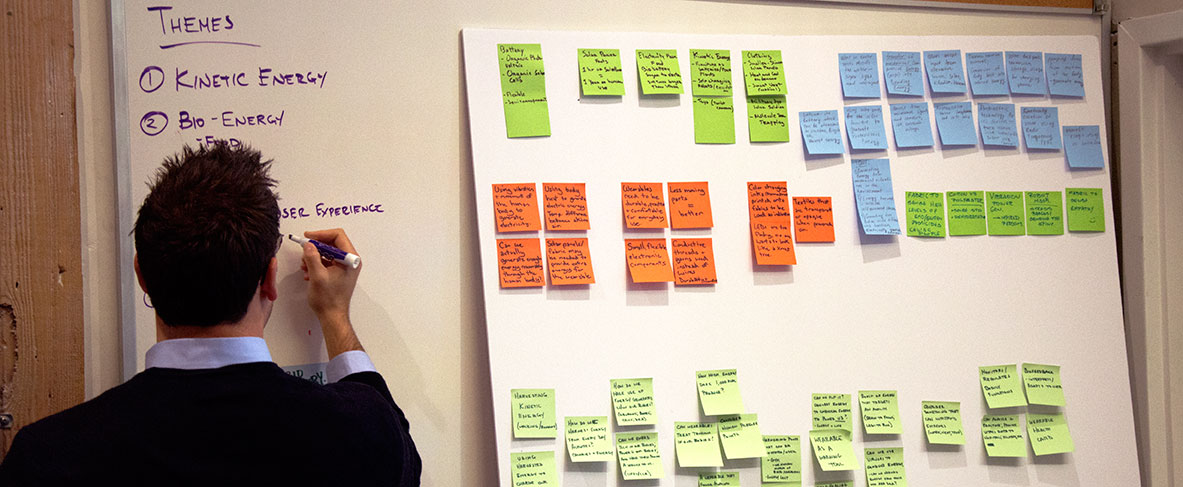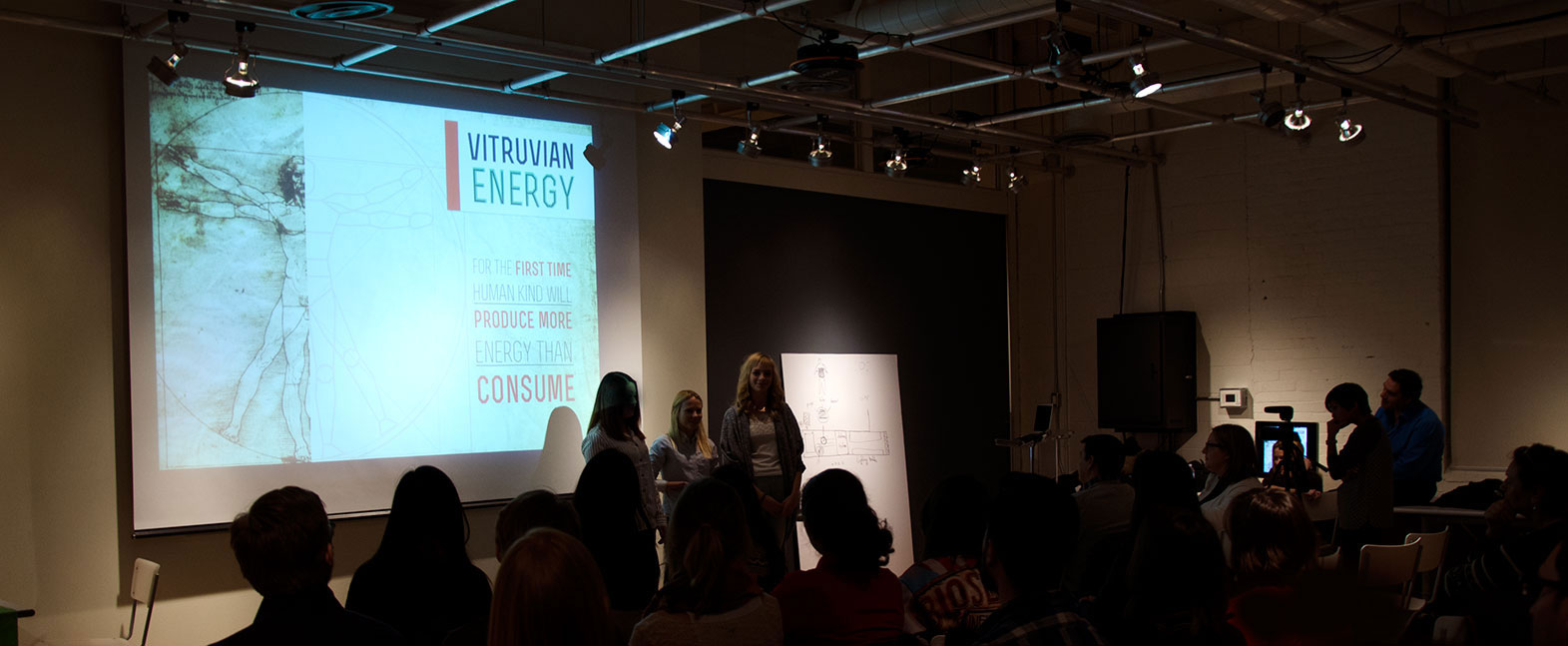The Vitruvian Energy Project: Investigating Wearables that Harvest, Convert & Store Energy
Overview:
Électricité de France (EDF) is the world’s largest producer of electricity. In 2014, EDF began the “Sharing Energy in the City 2030” competition through its Research and Development Department. A team of George Brown College Advanced Digital Design (ADD) and Institute without Boundaries (IwB) students entered the competition with a proposal called “The Vitruvian Energy Project,” which looks at transforming human body energy into electric energy by using different kinds of technologies.
The proposal was selected as a finalist of the competition. EDF organized two charrettes to develop the students’ work. The first one held at the IwB in December 2014 and a follow up charrette held in St. Etienne, France, in March 2015 during the Saint-Etienne Biennale.
The charrette held at the IwB took place from December 3rd to 5th 2014, bringing together thirty multidisciplinary participants, including students, design and technology professionals and representatives from the participating organizations.
Project Goals:
Starting with 100 precedents that were drawn from three areas – wearable, textile and industrial technologies – teams were asked to analyze their assigned technology theme and propose a design brief that could be used for the follow up design charrette in France.
To this end the charrette in Toronto aimed to produce ‘concept outlines’ and dossiers that the Saint-Etienne charrette teams could use to prototype a new concept to transform human body energy into electric energy.
__
Team Vitruvian Energy believes that for the first time in human history we can produce more energy than we consume.
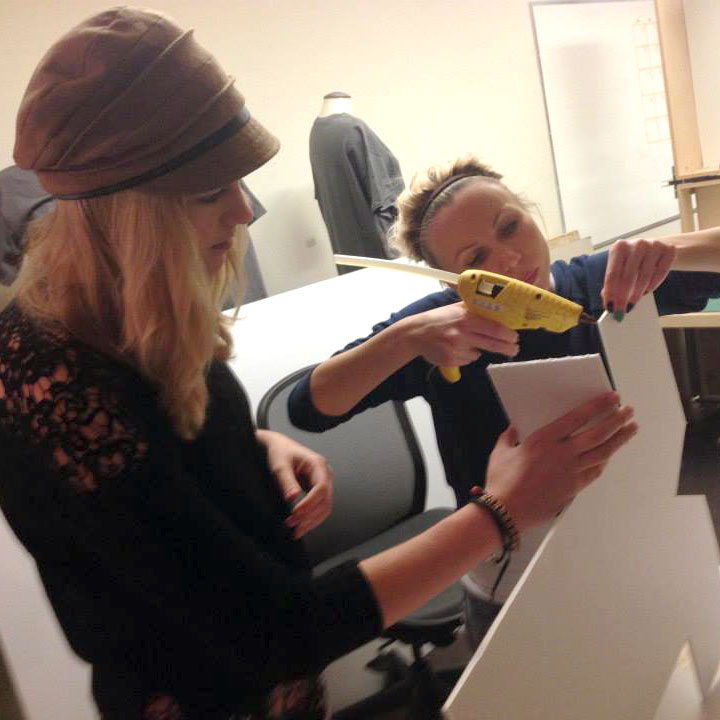
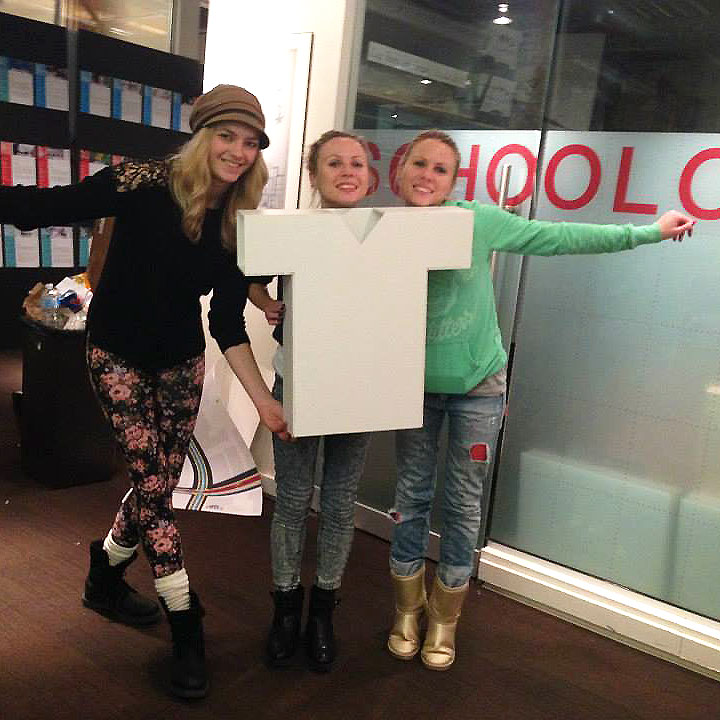
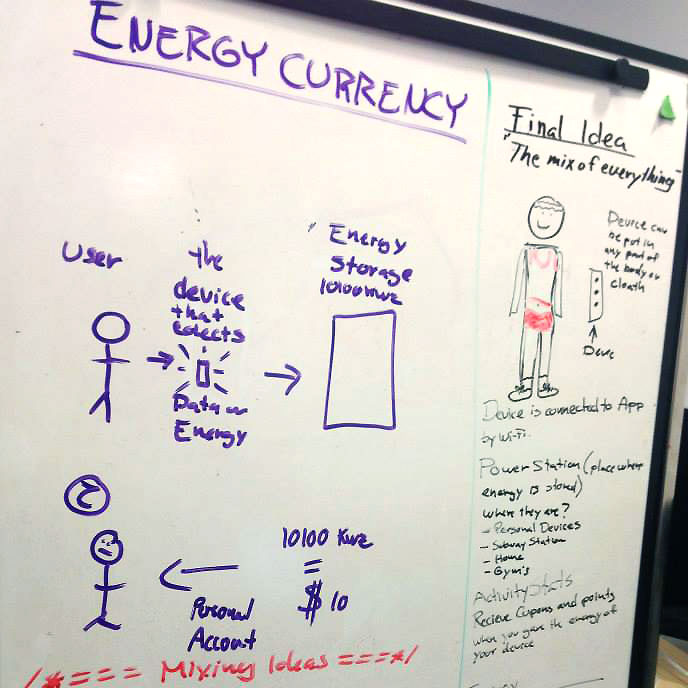
The Vitruvian Energy Project:
Imagine our clothes, belts, caps, pants, winter jackets, shirts along with smart devices such as wristbands and watches harvesting electricity from heat and movement. The Vitruvian Energy Project proposal aims to transform human body activities into electric energy by using different kinds of technologies. The proposal began from the basic law of energy that states that energy can neither be created nor destroyed. Instead, energy moves and can be converted from one form to another.
This means that the most common human activities, such as walking, biking, writing, opening a door or simply moving, produce free energy. The Vitruvian Energy Project aims to convert this energy into electricity and store it, enabling people to harvest energy from their daily activities. It works with wearable technologies that gather energy from the human body, which can be consumed or shared.
To this end, the students’ proposal includes a ‘Vitruvian Power Station’ [VPS], an accumulator or energy storage device, which can be installed in the home, public places, stores, or other common facilities.
The Vitruvian Energy Project proposes three types of applications:
- Personal Use so that users can consume the energy stored in their VPS to charge their electronic devices.
- Sharing Use so that users can share the collected energy with their friends, family or the community.
- Currency Use so users can exchange the Vitruvian Energy for products and public services.
The project focuses on wearable personal devices to gather energy produced by thermoelectric, electromagnetic and kinetic technologies, then giving individuals the choice of how to use it.
Project Outcome:
Personal energy needs are growing and there are many new developments in harvesting human power. Still, there is no common solution to tap into this potential opportunity and to unify emerging technologies.
EDF is working on bridging this gap in the energy sector. It supports energy research and prototyping development in France and abroad, like the Vitruvian Energy Project, utilizing its network partners in textile and technological systems to promote energy sharing.
The Vitruvian Energy Project charrette proposed various ways to advance the students’ original proposal to move it to the prototyping stage by connecting it with new technologies and networks. The Vitruvian Energy team is now working with professionals in the technology and textile industries to test their ideas. Thus, what began as a small collaboration of George Brown College Advanced Digital Design (ADD) and Institute without Boundaries (IwB) students, has grown to include international partners and collaborations.
The project promises to be extremely influential in the renewable energy sector. It has the potential to make people more aware of and more invested in alternative energies because they can become individual generators of energy. The Vitruvian Energy Project proposes solutions to the world’s energy crisis by focusing on the actions and the potential of individuals.
The project is ongoing, see the Vitruvian Power website and the EDF Sharing Energy in the City project pages for updates.
Project Credits:
IwB staff & faculty
Advanced Digital Design students
Électricité de France
GBC Student team: Biqi Long, Iuliia Kostiuk, Hector Sanchez, Rohit Kawade and Svetlana Iagodina, Sheetal Meshram, Rob Iacocca, Michi McCloskey, Sudeep Kumar.
GBC Faculty Mentors: Xavier Massé & Chris Pandolfi
Photo and text source credits:
Xavier Massé
Barbara Kowalski
Iuliia Kostiuk
Antonina Kostiuk
Becky Long
Svetlana Iagodina
Project Tags:
Électricité de France, EDF, Vitruvian Energy Project, charrette, wearable technology, energy, electricity
“This is an incredible example of a concept that won a competition and then quickly went on to become a prototype. It really captures the power of learning by doing and multidisciplinary collaboration.”
– Xavier Massé, IwB faculty, Interaction Designer and Creative Director of Relay

